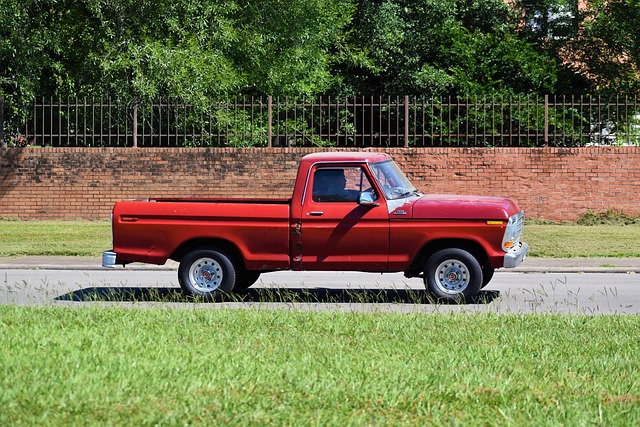Hot shot trucking uses smaller trucks for urgent, time-sensitive deliveries, mainly in industries like construction, manufacturing, and retail. This niche offers flexibility and speed, making it perfect for those looking to start their own trucking business. In this guide, you’ll be understanding hot shot trucking, discovering its benefits, and learning how to get started.
Key Takeaways
Hot shot trucking specializes in urgent, smaller load deliveries, utilizing smaller vehicles for localized, quick transport across various sectors like construction and retail.
Invoice factoring provides immediate cash flow for hot shot truckers, enabling them to maintain operations and take on more loads without waiting for customer payments.
Unlike traditional financing, factoring offers quick access to funds without the need for collateral or extensive documentation, making it a practical solution for cash flow management.
Understanding Hot Shot Trucking: Essential Insights and Tips

Hot shot trucking, a term originating from the 1970s oil sector, has its roots deeply embedded in urgent delivery scenarios. Back then, individuals would transport urgently needed parts to drilling sites, minimizing downtime by delivering directly to the location. This crucial need for speed and efficiency has shaped the hot shot trucking industry into what it is today.
The flexibility and speed of hot shot trucking make it indispensable across various sectors, including construction, manufacturing, and retail. Whether it’s delivering essential tools to a construction site or ensuring that retail products reach their destinations promptly, hot shot trucking services are tailored for time-sensitive deliveries, enhancing operational efficiency.
Characterized by the use of smaller vehicles, hot shot trucking enables expedited delivery and direct transport from pickup to destination. Typically, these services operate on local or regional routes rather than nationwide, allowing for quick and efficient transportation within a specific area. This localized approach ensures that hot shot truckers can respond rapidly to urgent delivery needs, making them a vital component of the logistics chain.
Introduction
Hot shot trucking is not only about speed and efficiency but also about the ability to manage one’s own business. Owner operators in this field often use their own equipment, such as pickup trucks and personal trailers, to transport small loads. This autonomy allows them to cater to specific shipping needs and provides a unique sense of independence.
The flexibility offered by hot shot trucking is unparalleled. Imagine being able to transport as much weight as your vehicle can handle, from agricultural equipment to construction equipment, all while maintaining a low center of gravity for stability. This versatility is further enhanced by the use of bumper pull trailers and other specialized equipment designed for hot shot loads.
Hot shot trucking ensures urgent shipments are delivered promptly. Hot shot drivers navigate load boards for jobs and manage logistics to meet time-sensitive deadlines. This fast-paced environment makes a hotshot driver a rewarding career for a hotshot trucking company.
What Hot Shot Trucking Entails
Hot shot trucking delivers smaller, time-sensitive loads swiftly. Originating in the 1970s oil sector, it has evolved to address urgent deliveries across industries, minimizing downtime and ensuring timely arrival of critical parts and equipment.
Hot shot trucking usually operates on local or regional routes for faster, direct deliveries. This model enhances efficiency for businesses needing quick turnarounds. Smaller vehicles allow navigation of routes inaccessible to larger trucks, offering speed and flexibility.
Hot shot trucking serves diverse sectors like construction, manufacturing, and retail, making it integral to the logistics chain by ensuring prompt and efficient urgent deliveries.
Defining Hot Shot Trucking
Hot shot trucking focuses on transporting smaller, time-critical loads. These essential items, typically weighing less than 16,500 pounds, are manageable for the smaller pickup truck vehicles used in this sector.
Hot shot trucking is characterized by its flexibility and rapid delivery. Whether short hauls across town or long-distance deliveries, hot shot truckers handle various distances efficiently, minimizing downtime and maintaining operational flow with hot shot trucks.
Hot shot trucking expedites smaller, time-sensitive loads over various distances. This specialized service is crucial for industries needing quick, reliable delivery of critical items, ensuring smooth and efficient operations.
Overview of Invoice Factoring
Invoice factoring is a financial tool that can significantly benefit hot shot truckers by providing immediate cash flow. This process involves selling unpaid invoices to a factoring firm in exchange for cash, allowing trucking companies to maintain liquidity and continue operations without waiting for customer payments. Factoring is particularly beneficial for new or growing trucking firms that may face challenges with traditional financing options.
The process is straightforward: a factoring company purchases a trucker’s invoices at a discount and provides funds upfront for those invoices. Many factoring companies offer advanced services, such as fuel cards and credit checks on brokers and shippers, to further support trucking businesses.
The speed of funding is another significant advantage, with many companies providing funds within 24 hours of invoice submission.
Benefits of Factoring for Hot Shot Truckers

Factoring offers immediate cash flow for hot shot truckers, enabling near-instant payment for invoices and eliminating the need for truckers to handle collection calls. This allows truckers to take on more loads and customers without cash flow concerns.
Factoring also supports operations by funding expenses like fuel, repairs, and staff payments. Services can include credit checks on potential clients, helping truckers avoid risky business relationships.
Factoring allows truckers to negotiate better payment terms with customers, without the wait for funds.
How Factoring Improves Cash Flow
Factoring enhances cash flow for hot shot trucking companies by providing immediate cash from invoices. This allows continuous operations without waiting for customer payments and avoids complications of traditional loans. Improved cash availability enables firms to take on more loads and optimize routes, boosting operational efficiency.
With factoring, companies can focus on growth and efficiency rather than payment collection. Services often include customer credit checks, mitigating payment risks.
Hot shot trucking companies can access funds within 24 hours of submitting invoices, ensuring steady cash flow.
Common Terms and Conditions in Factoring Agreements
A factoring agreement details the terms for selling invoices to a factoring company. Key terms include the advance rate, typically 70%-95% of the invoice’s value, and non-recourse factoring, which protects the trucking company by having the factoring company absorb losses if the customer defaults.
Other terms include reserve accounts (holding a portion of each invoice to cover potential defaults) and factoring fees (a small percentage of the invoice value). Credit limits are set by the factoring company based on the customer’s credit rating to manage funding risks.
The notification process, informing customers to direct payments to the factoring company, is also a standard term in these agreements.
Comparison with Traditional Financing Options
Invoice factoring provides immediate cash without needing a solid business plan, financial forecasts, or collateral, unlike traditional business loans. Factoring enables quick access to funds, ensuring uninterrupted operations for hot shot truckers.
Equipment financing, another traditional option, is tailored for purchasing necessary machinery, using the equipment as collateral. While beneficial for acquiring new equipment, it doesn’t address immediate cash flow needs like factoring.
Lines of credit offer flexibility by allowing truckers to borrow funds as needed to manage cash flow, but they often come with stringent approval requirements and potential debt accumulation.
Personal, SBA, and commercial loans each have distinct advantages and disadvantages. Personal loans may have higher interest rates and no collateral requirement. SBA loans offer lower rates and longer terms but need extensive documentation. Commercial loans provide larger funding amounts but typically require strong credit and collateral.
Alternative financing options like peer-to-peer lending and crowdfunding can be explored but often require significant effort and a higher credit score.
Steps to Get Started with Factoring
Starting with factoring involves identifying your hot shot hauling needs to find a suitable factoring company. After finding a potential partner, complete a simple online application or call the company. The approval process typically takes 3-5 days.
Upon approval, start submitting freight bills to receive a cash advance within 24 hours. Factoring offers flexibility; clients can select which invoices to factor, providing more financial control.
Even those with poor credit can qualify for freight factoring, as it relies on the creditworthiness of your customers rather than your own credit history.
Potential Challenges and Solutions
Hot shot trucking has its challenges, but proper strategies can effectively manage them. The load capacity limit compared to larger trucks can restrict potential earnings per trip. Hot shot truckers can overcome this by focusing on securing higher-paying, time-sensitive loads.
The hot shot trucking industry is highly competitive, requiring drivers to actively pursue contracts and build a reliable client base. Networking, maintaining a strong reputation, and using load boards can help find more opportunities and secure steady work. Managing operating costs is crucial, as these can be higher per mile due to fuel efficiency, maintenance, and insurance expenses.
As independent operators, hot shot truck drivers must manage all their expenses, including fuel and maintenance, to ensure profitability. Navigating regulatory requirements, including obtaining a commercial driver’s license, is another challenge, requiring compliance with various federal, state, and local laws. Staying informed and seeking assistance from industry associations can help remain compliant and avoid costly fines.
Summary
Hot shot trucking plays a vital role in the transportation industry, offering flexibility, speed, and efficiency for time-sensitive deliveries. This guide has explored the essential aspects of hot shot trucking, from its history and operations to the intricacies of financing through invoice factoring. By understanding the benefits of factoring, hot shot truckers can improve their cash flow, take on more loads, and maintain their operations effectively.
In conclusion, invoice factoring is a valuable financial tool that provides immediate cash flow, helping hot shot truckers manage their expenses and grow their businesses. With the right strategies and knowledge, hot shot drivers can navigate the challenges of the industry and ensure their success. Whether you’re just starting or looking to expand your hot shot trucking business, considering factoring could be a game-changer for your financial stability and growth.
Frequently Asked Questions
What are the main benefits of factoring for hot shot truckers?
Factoring offers hot shot truckers immediate cash flow and relieves them from making collection calls, allowing them to take on more loads and efficiently manage expenses. This financing option also includes credit checks on potential clients, enhancing overall business security.
How does factoring improve cash flow for hot shot truckers?
Factoring improves cash flow for hot shot truckers by providing immediate cash from invoices, enabling them to take on more loads and better routes without the complications of traditional loans. This access to funds not only enhances their operational efficiency but also supports business growth.
What are the common terms and conditions in factoring agreements?
The common terms in factoring agreements typically include advance rates ranging from 70% to 95%, non-recourse options, reserve accounts, factoring fees, credit limits, and detailed notification processes. These elements are essential for establishing clear expectations between parties.
How does invoice factoring compare to traditional financing options?
Invoice factoring offers quick access to cash without the obligation of debt repayment, contrasting with traditional financing options that typically involve more stringent requirements and repayment terms. This makes invoice factoring a more flexible choice for businesses needing immediate liquidity.
What are the steps to get started with factoring?
To get started with factoring, first identify your hauling needs and complete an application. Then, go through the approval process, submit freight bills, and select the invoices you wish to factor.

